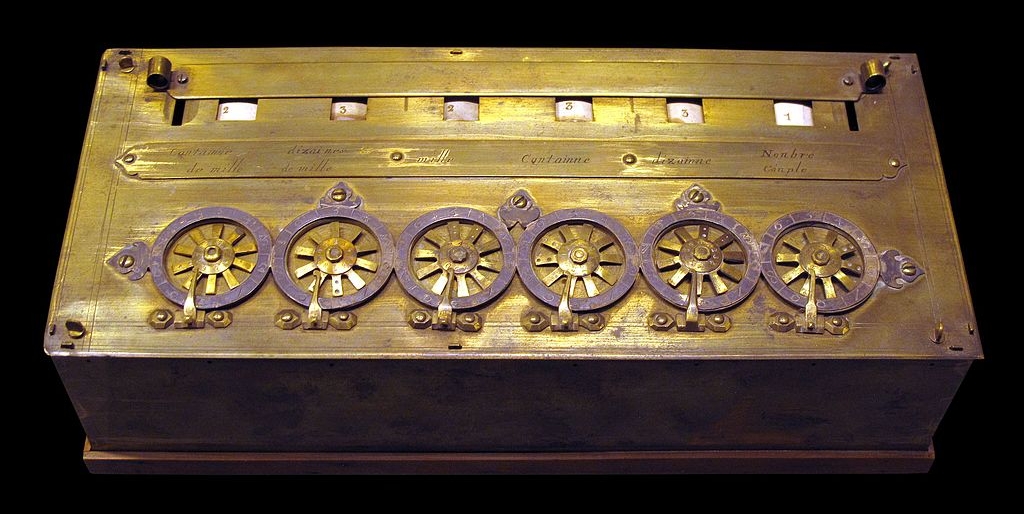KNOWLEDGE AND THE KNOWER—PERSPECTIVE
PASCAL’S WAGER
Pascal's Triangle.
Blaise Pascal (1623-62) was a French mathematician and theologian. Pascal's triangle is wonderful example of why mathematics is often referred to as "the science of pattern." Warm up the TOK class by putting a HL math student on the spot. Ask them to:
a. Explain the pattern of the triangle
b. Remind the class how the rows the correspond the coefficients of binomial expansions
c. Show that shallow diagonals sum to the Fibonacci sequence (1, 1, 2, 3, 5, 8, 13, 21, 34...)
d. Show that the 3rd diagonals are the Triangle numbers (1, 3, 6, 10, 15, 21, 28...)
We will revisit Pascal's Triangle and Triangle numbers in more detail in Pure mathematics: invented or discovered?
Pascaline: 17th Century mechanical calculator built by Blaise Pascal. Musée des Arts et Métiers, Paris
CLASS ACTIVITY—PASCAL'S WAGER AND EXISTENTIAL RISK
Arguments resembling Pascal's wager appeared in Chinese, Greek and other ancient civilizations. Pascal is famous because he framed his version in terms of probability theory that lends itself to simple decision table.
Pascal's wager appears in the Pensées, Here is a truncated extract from the relevant passage translation from the very eloquent French.
If there is a God, He is infinitely incomprehensible, since, having neither parts nor limits, He has no affinity to us. We are then incapable of knowing either what He is or if He is....
"God is, or He is not." But to which side shall we incline?...[Y]ou must wager... Which will you choose then? Let us see... Let us estimate these two chances. If you gain, you gain all; if you lose, you lose nothing.
Wager, then, without hesitation that He is.
Students should work in groups of three. First they should read the Pascal's wager text extract and make sure that everyone in the group fully understands how it relates to the table.
1. Now make your own decision table. We will start with an easy one: whether or not to wear a seat belt.
2. Next try the following. Read what linguist and activist Noam Chomsky had to say about man's capacity for self destruction in a June 14, 2013 Guardian comment editorial entitled How to destroy the future.
For the first time in the history of the human species, we have clearly developed the capacity to destroy ourselves. That's been true since 1945. It's now being finally recognized that there are more long-term processes like environmental destruction leading in the same direction, maybe not to total destruction, but at least to the destruction of the capacity for a decent existence.
Chomsky is referring to nuclear weapons and human-enhanced global warming. Make a fully labeled decision table, patterned on Pascal's wager, that summarizes the consequences of acting or not acting to prevent catastrophic global warming.
3. If time permits: try constructing a decision table for nuclear disarmament. You may need an extra column.
FOR CONSIDERATION
What aspects are certain in Pascal's wager table and your own catastrophic human induced global warming wager table?
What aspects are either unknowable or highly contentious in Pascal's wager table, and your own catastrophic human induced global warming wager table?
To what extent do these decisions tables successfully use reason and the laws of mathematics in a very simple way to avoid the impasse of getting bogged down in complexity and controversy?
To what extent does Pascal's wager foster, or undermine, religious faith?
It is important to mention here that this activity was partially inspired by Greg Craven's series of viral videos, "What's the Worst That Could Happen?"
Source: NASA Giss



